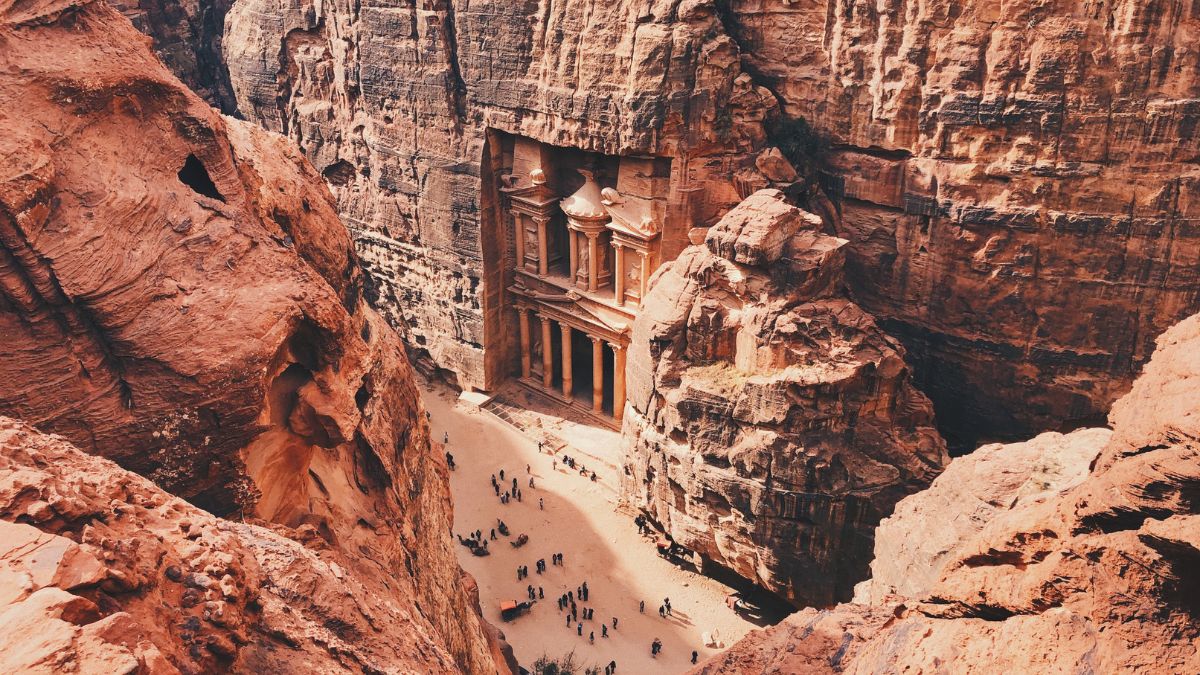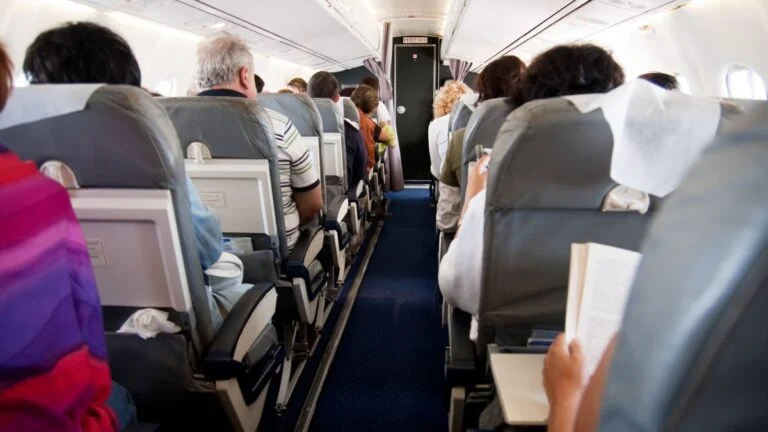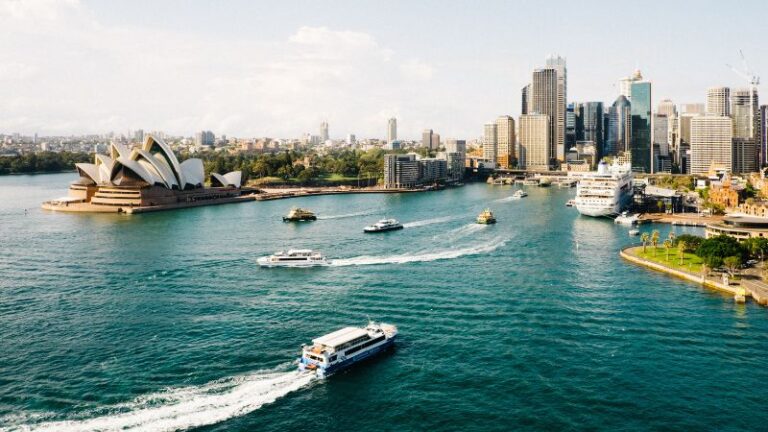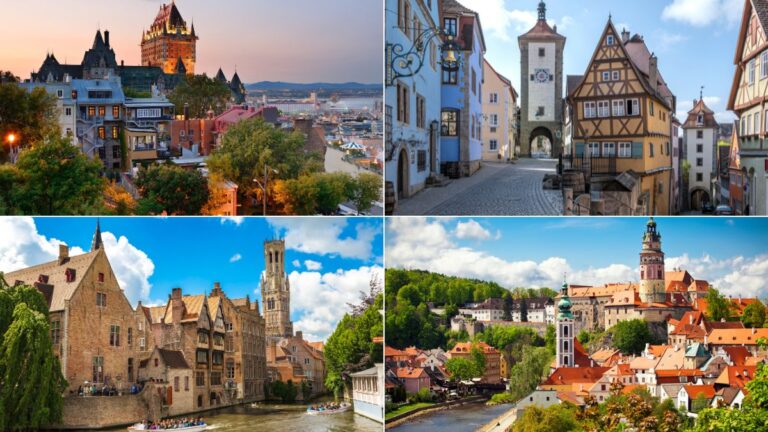Worst Time to Visit Jordan: Summer Heatwaves and Ramadan Considerations

As participants in Amazon Associates and other programs, we earn from qualifying purchases. This comes at no additional cost to you. For more details, see our Affiliate Disclosure.
As enticing as the thought of traversing through Jordan’s ancient ruins, marveling at its majestic landscapes, and immersing in its rich culture might be, it’s important to bear in mind that timing plays a crucial role in your travel experience. If you’re planning a trip to this Middle Eastern gem, you might want to think twice before scheduling it during the scorching summer months or the holy period of Ramadan.
These periods present unique challenges, such as intense heatwaves and specific cultural observances, which could potentially transform a dream vacation into a rather challenging ordeal. Let us tell you what the worst time to visit Jordan is, so you could avoid unnecessary problems.
The Searing Summers of Jordan: Understanding the Heatwave Phenomenon
Jordan, nestled in the heart of the Middle East, experiences an arid desert climate that is synonymous with high temperatures, especially during the summer months. From June to August, the mercury soars dramatically, often reaching the high 40s Celsius (over 110 Fahrenheit) in regions like the Jordan Valley and the desert areas, including the famous Wadi Rum.
Heatwaves, while a naturally occurring meteorological phenomenon, have become increasingly intense in recent years due to climate change. These periods of excessively hot weather, which can last for several days or even weeks, pose significant challenges not just for the local population, but also for tourists unaccustomed to such severe conditions.
Extreme heat can lead to discomfort, exhaustion, and potentially serious health risks such as dehydration and heatstroke. These conditions can make sightseeing a real challenge, not to mention that many animals in popular attractions like the Wadi Rum desert may go into hiding to escape the heat, potentially diminishing the overall wildlife viewing experience.
Furthermore, the scorching heat can also affect the operating hours of many tourist attractions, with some places closing during the hottest parts of the day. Consequently, this can disrupt your itinerary and limit your opportunities to fully explore the historic and cultural marvels that Jordan has to offer.
Therefore, it is advisable to take these factors into account when planning your trip, ensuring that you’re prepared to deal with the summer heat and understand the implications it may have on your travel experience.
Coping with the Heat: Health and Safety Considerations
As temperatures in Jordan climb during the summer, staying healthy and safe should be a top priority for all visitors. The harsh desert climate can quickly lead to health complications, with risks ranging from mild dehydration to severe heatstroke. Here are some crucial considerations for coping with Jordan’s intense heat.
- Hydrate, hydrate, hydrate: This cannot be overstated. Ensure you have access to plenty of clean, safe drinking water at all times. Electrolyte solutions or sports drinks can also be beneficial to replace salts lost through sweating.
- Avoid Peak Sun Hours: Plan your outdoor activities to avoid the hottest parts of the day, usually between 11 am and 4 pm. Use this time to rest, have a meal, or visit indoor attractions.
- Dress Appropriately: Wear light-colored, loose-fitting clothing made of breathable fabrics. A wide-brimmed hat, sunglasses, and sunscreen are essential to protect from the strong sun.
- Cool Down: If possible, find an air-conditioned place to rest during peak heat hours. If that’s not an option, wetting your face, neck, and wrists with cool water can provide temporary relief.
- Eat Lightly: Heavier meals can raise your body temperature and are harder to digest in the heat. Opt for light, refreshing meals with plenty of fruits and vegetables.
- Recognize Heat-Related Illnesses: Familiarize yourself with the symptoms of heat exhaustion (like heavy sweating, rapid pulse, dizziness, nausea, or headache) and heatstroke (a high body temperature, lack of sweat, confusion, or unconsciousness). Seek immediate medical help if you or anyone in your party experiences these symptoms.
- Travel Insurance: Ensure that your travel insurance covers heat-related illnesses. This could save you from high medical costs in case of an emergency.
Armed with these strategies, you’ll be better prepared to tackle the sweltering summer months in Jordan, ensuring a safe and enjoyable travel experience.
Why You Might Reconsider Visiting During Ramadan
Ramadan, the holy month in the Islamic calendar, is a time of religious observance for Muslims worldwide, including in Jordan. During this period, which lasts for around 29-30 days, Muslims fast from dawn until sunset, refraining from eating, drinking, smoking, and even chewing gum. While Ramadan is undoubtedly a time of reflection, spiritual growth, and communal celebration for Muslims, it can present some unique challenges for tourists. Here’s why you might reconsider visiting Jordan during Ramadan:
- Restricted Services: During the fasting hours, most restaurants and cafes remain closed or have limited service, especially in smaller towns and rural areas. While establishments catering to tourists might remain open, the options are generally fewer.
- Altered Business Hours: Many businesses, including some tourist attractions, may alter their operating hours to accommodate the Ramadan schedule. This can disrupt your sightseeing plans.
- Eating and Drinking in Public: While it is not illegal for non-Muslims to eat or drink in public during Ramadan, it is considered respectful to refrain from doing so out of consideration for those who are fasting.
- Limited Nightlife: Nightlife during Ramadan is often subdued as the focus is on prayer, reflection, and family gatherings. Events and music festivals are less common during this period.
- Energy Levels: Given the lack of food and water during the day, you might find that local energy levels are lower, which could affect the overall vibe and tempo of your trip.
Visiting Jordan during Ramadan is not an entirely negative prospect, though. It can offer unique cultural insights, such as witnessing the breaking of the fast (Iftar) or the special evening prayers (Taraweeh).
However, for a first-time visitor or someone looking for a more standard touristic experience, the challenges posed during Ramadan might be a factor to consider while planning the trip.
Ramadan: A Time of Pious Observance and Cultural Shifts

Ramadan is not just a month in the Islamic calendar; it is a significant period of pious observance, cultural shifts, and community solidarity that deeply influences the rhythm of daily life in Jordan. It is a time when spiritual devotion takes center stage, bringing along a shift in cultural norms that permeate every aspect of society.
During Ramadan, the pace of life changes significantly. Daytime is quieter as people observe the fast, which involves abstaining from food, drink, smoking, and other physical needs from dawn till sunset. This practice not only tests the faithful’s self-discipline but also brings them closer to God and encourages empathy for those less fortunate. Consequently, the usual bustle of markets and streets is reduced during the day, with life springing back in full swing after the breaking of the fast at sunset, known as Iftar.
The evening time during Ramadan in Jordan is nothing short of magical. Post-Iftar, families and friends gather to enjoy special meals and engage in communal prayers called Taraweeh, making the nights lively and vibrant. It’s common to see colorful decorations and lights adorning the streets, while the sound of prayer and recitation reverberates through the air, lending a distinct aura to the surroundings.
Moreover, Ramadan is also a time for charity and good deeds, known as Zakat, which is one of the Five Pillars of Islam. Muslims often contribute more to charity during this period, reflecting a heightened sense of community and compassion.
For a visitor, observing these customs and practices provides a unique glimpse into the soul of Jordanian culture. It’s an opportunity to understand the deep religious and social significance of Ramadan, thus appreciating the nuances of this remarkable society. However, one should remember that these observances and shifts also result in practical changes in daily life, such as altered business hours and social norms, which might require adjustments and understanding on the part of the traveler.
Navigating the Ramadan Customs as a Tourist
Traveling to Jordan during Ramadan offers a unique cultural experience, but it also requires a certain level of understanding and respect for the customs observed during this holy month. Here are some guidelines to help you navigate the Ramadan customs as a tourist:
Respect the Fast: Although non-Muslims aren’t expected to observe the fast, it’s courteous to avoid eating, drinking, or smoking in public during daylight hours. Many hotels and tourist-oriented restaurants will continue to serve food and drinks throughout the day, but it’s best to consume these in private.
Dress Modestly: While Jordan is generally liberal in terms of dress code, it’s particularly important to dress modestly during Ramadan. Avoid wearing revealing clothing as a mark of respect during this sacred month.
Be Aware of Modified Timings: The rhythm of daily life changes significantly during Ramadan, with many businesses adjusting their operating hours. Attractions may open later and close earlier, so be sure to check the timings in advance.
Experience Iftar: Iftar, the meal that breaks the fast at sunset, is a time of joyous communal dining. It’s often a feast of traditional Jordanian dishes, and experiencing it can be a highlight of your trip. Many restaurants offer special Iftar meals, and some locals might even invite you to share the meal with their families.
Avoid Loud Music and Dancing: During Ramadan, Muslims focus on prayer and reflection, so loud music and dancing are generally avoided. Respect this practice, especially when you’re in residential areas.
Embrace the Evening Activities: After breaking the fast, the streets come alive with activity. Night markets, communal prayers, and family gatherings become the norm. This can be an excellent opportunity for you to witness Jordan’s vibrant culture.
Traveling during Ramadan requires a sensitive and respectful approach. With the right attitude, it can be an enriching experience, offering insights into the spiritual depth and communal ties that characterize Jordanian society during this holy month.
Practical Tips: Preparing for Jordan’s Summer and Ramadan
When preparing for a visit to Jordan during the hot summer months or the holy month of Ramadan, it’s important to consider several practical tips that will help ensure your trip is as enjoyable and comfortable as possible.
For Summer Heatwaves
- Stay Hydrated: Always carry a reusable water bottle with you to stay hydrated. If you’re exploring outdoor locations, consider bringing an electrolyte solution to replenish lost salts from sweating.
- Sun Protection: Don’t forget to pack a high-SPF sunscreen, a wide-brimmed hat, and UV-protective sunglasses. Wearing lightweight, breathable, and light-colored clothing can also help to keep you cool.
- Plan Your Day: Aim to do most of your sightseeing in the early morning or late afternoon to avoid the peak heat hours.
- Check Operating Hours: Some tourist attractions might have reduced hours during the summer months due to the heat. Confirm their operating hours in advance.
For Ramadan
- Understand the Schedule: Familiarize yourself with the Ramadan timetable, particularly the timing of the fast which varies each day.
- Plan Your Meals: During Ramadan, many restaurants remain closed during daylight hours. Make sure you plan your meals accordingly or opt for self-catering accommodation.
- Respect the Customs: Be respectful of those observing Ramadan by avoiding eating, drinking, or smoking in public during fasting hours.
- Dress Appropriately: Modest attire is particularly appreciated during Ramadan. Avoid wearing revealing clothing in public.
- Enjoy the Night: Nights during Ramadan are festive and vibrant. Enjoy the unique atmosphere, traditional food, and communal spirit.
By keeping these tips in mind and respecting local customs and traditions, you’ll be well-prepared for a memorable trip to Jordan, regardless of the challenges posed by summer heatwaves or Ramadan observances.
Pros and Cons: Weighing the Summer and Ramadan Experiences
Visiting Jordan during the summer heatwaves or the holy month of Ramadan can offer unique experiences, but each comes with its own set of advantages and disadvantages. Let’s weigh the pros and cons to help you make an informed decision.
Summer Heatwaves
Pros:
- Less Crowded: Tourist crowds are significantly smaller during the summer months, which can make for a more peaceful and personal experience when visiting popular sites.
- Lower Prices: You may find cheaper accommodation and flight deals during the off-peak season, which can help you save on travel costs.
- Longer Days: The summer months offer longer daylight hours, giving you more time to explore.
Cons:
- Extreme Heat: The summer heat can be overwhelming, especially for those not accustomed to such high temperatures, which could limit outdoor activities.
- Health Risks: The intense heat can pose health risks such as dehydration and heatstroke.
- Limited Animal Sightings: Wildlife tends to hide from the scorching heat, which might make animal sightings less likely in desert regions.
Ramadan
Pros:
- Cultural Immersion: Ramadan offers a unique opportunity to experience Jordanian culture and traditions in a special light, with vibrant night markets and Iftar celebrations.
- Spiritual Atmosphere: The atmosphere during Ramadan is filled with spirituality, fostering a sense of community and reverence.
Cons:
- Altered Timings: Many businesses, including tourist attractions, change their operating hours during Ramadan, which could disrupt your itinerary.
- Limited Daytime Dining: Finding open restaurants during the day can be challenging as Muslims fast from dawn until sunset.
- Lower Energy Levels: The pace of daily life slows down during Ramadan due to fasting, which might affect the overall vibrancy you might otherwise experience.
Both periods can offer unique and enriching experiences, but it’s important to be aware of the challenges and to prepare accordingly. Always consider your personal preferences, tolerance for heat, and flexibility when planning your trip to Jordan.
Alternative Travel Periods: The Best Times to Visit Jordan
While Jordan can be visited year-round, the summer heatwaves and the holy month of Ramadan pose certain challenges for the unprepared tourist. If your travel dates are flexible, there are alternative periods that provide optimal weather conditions and cultural experiences.
Spring (March – May)
Spring is considered one of the best times to visit Jordan. The weather during this time is pleasant, with average temperatures ranging between 20°C to 25°C (68°F to 77°F). The landscapes come alive with lush greenery and blooming wildflowers, particularly in the northern regions, making it perfect for nature walks and outdoor explorations.
The ancient ruins of Petra and the Roman city of Jerash are particularly stunning in this season.
Autumn (September – November)
Autumn is another excellent time to visit Jordan. The scorching heat of the summer subsides, and the weather becomes mild and enjoyable, similar to spring. It’s a great time for desert camping in Wadi Rum, hiking in Dana Biosphere Reserve, or floating in the Dead Sea.
Plus, the food markets are full of fresh autumn produce, giving you a chance to taste the country’s seasonal cuisine.
Winter (December – February)
Though winters can be quite cold, especially in the desert at night, it’s a good time for those who prefer less crowded tourist sites. Jordan’s winters are relatively mild compared to many Western countries, with temperatures ranging from 5°C to 15°C (41°F to 59°F).
This season can bring occasional rain and even snow in higher altitudes, adding a unique perspective to Jordan’s landscapes. However, some tourist sites might have reduced hours, and certain activities may not be available.
In conclusion, if you wish to avoid the extreme heat and the possible inconveniences during Ramadan, consider planning your trip to Jordan in spring or autumn for the most comfortable and immersive experience. If you don’t mind a bit of chill and fewer crowds, winter can also be a suitable option.






